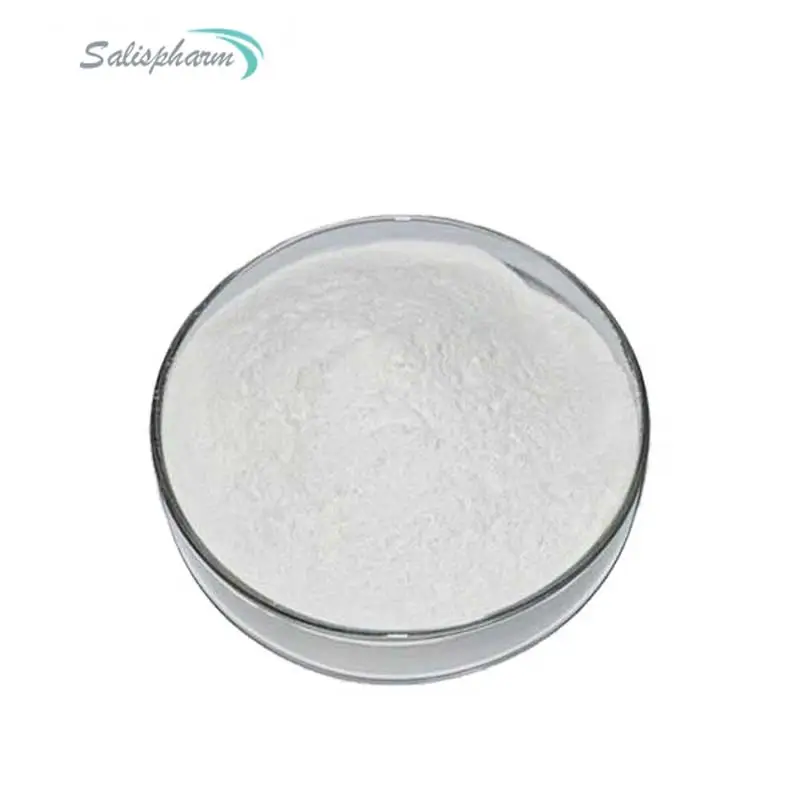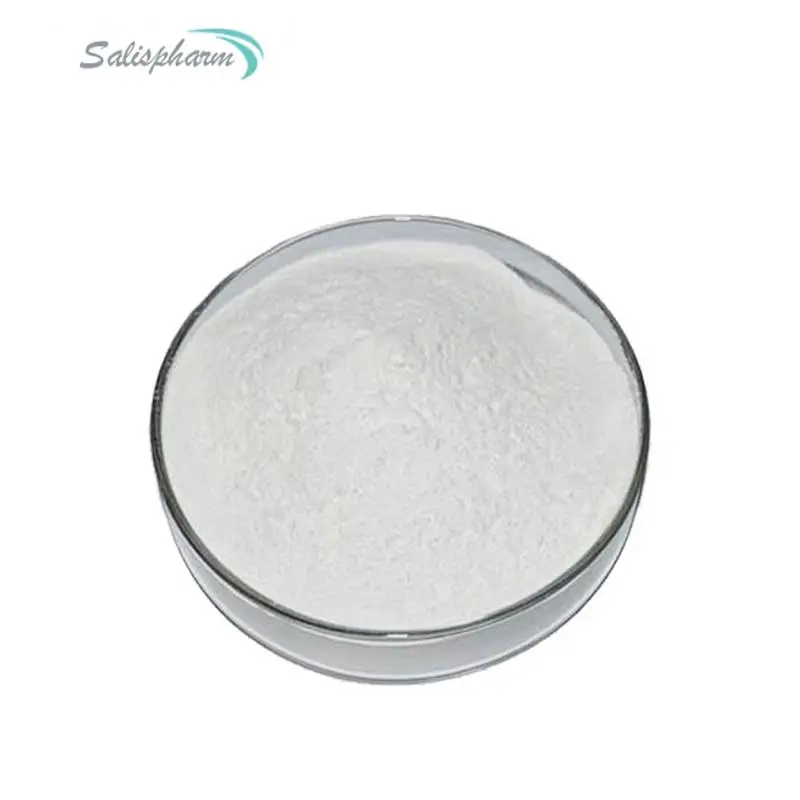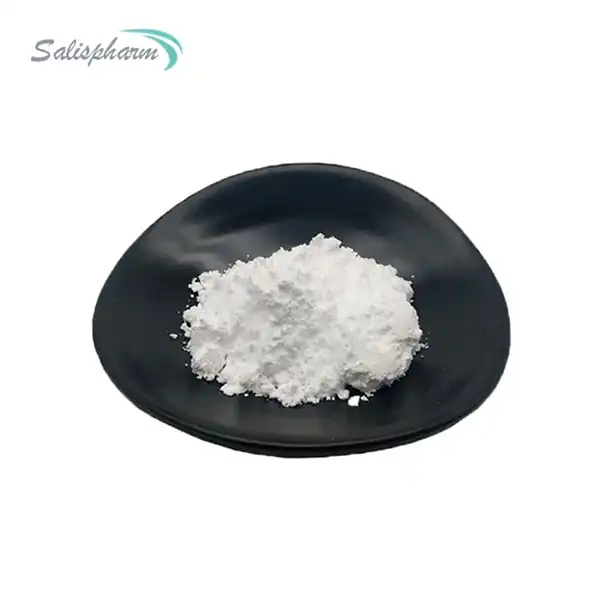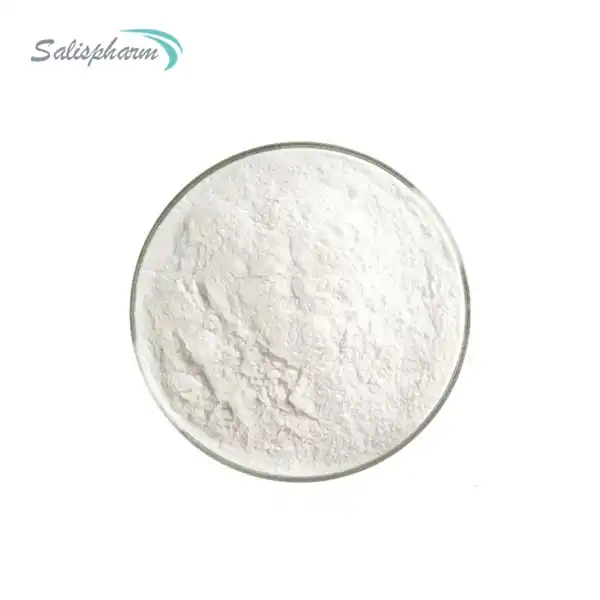Anastrozole is a medication that has revolutionized the treatment of hormone receptor-positive breast cancer in postmenopausal women. As an aromatase inhibitor, anastrozole works by reducing the production of estrogen in the body, which can fuel the growth of certain types of breast cancer. This drug has become a cornerstone in the management of early-stage and advanced breast cancer, offering improved outcomes and quality of life for many patients.
How does anastrozole powder work in treating breast cancer?
Anastrozole powder, the active ingredient in the medication, plays a crucial role in the treatment of hormone receptor-positive breast cancer. Its mechanism of action is both elegant and effective, making it a valuable tool in the oncologist's arsenal.
At its core, anastrozole functions as an aromatase inhibitor. Aromatase is an enzyme responsible for converting androgens (male hormones) into estrogens (female hormones) in various tissues throughout the body. In postmenopausal women, the primary source of estrogen is not the ovaries but rather the conversion of androgens to estrogens in peripheral tissues.
Anastrozole selectively binds to and inhibits the aromatase enzyme, effectively blocking this conversion process. By doing so, it significantly reduces the overall levels of estrogen in the body. This is particularly important in the context of hormone receptor-positive breast cancer, where estrogen can act as a fuel for tumor growth.
When estrogen binds to receptors on breast cancer cells, it stimulates their growth and proliferation. By dramatically lowering estrogen levels, anastrozole essentially "starves" these cancer cells of the hormone they need to thrive. This can lead to several positive outcomes:
1. Slowing or stopping the growth of existing tumors
2. Preventing the spread of cancer to other parts of the body (metastasis)
3. Reducing the risk of cancer recurrence in women who have been treated for early-stage breast cancer
The effectiveness of anastrozole in reducing estrogen levels is remarkable. Studies have shown that it can lower circulating estrogen concentrations by up to 80% in postmenopausal women. This potent estrogen-suppressing effect makes anastrozole particularly useful in treating advanced or metastatic breast cancer, where it can help shrink tumors or slow their growth.
Moreover, anastrozole's selective nature means it targets only the aromatase enzyme, minimizing its impact on other hormonal systems in the body. This selectivity contributes to its generally favorable side effect profile compared to some other hormonal therapies.
In clinical practice, anastrozole is typically administered orally in tablet form, with the active anastrozole powder carefully formulated for optimal absorption and efficacy. The standard dose is usually 1 mg taken once daily, although this can be adjusted based on individual patient needs and responses.
It's worth noting that the benefits of anastrozole extend beyond its use in treating active breast cancer. It has also shown promise in the prevention of breast cancer in high-risk postmenopausal women. Several large-scale clinical trials have demonstrated its effectiveness in reducing the incidence of breast cancer in this population, further underscoring its value as a versatile tool in breast cancer management.
What are the advantages of using anastrozole over other breast cancer treatments?
Anastrozole has emerged as a preferred treatment option for many postmenopausal women with hormone receptor-positive breast cancer, offering several advantages over other therapeutic approaches. Understanding these benefits can help patients and healthcare providers make informed decisions about treatment strategies.
One of the primary advantages of anastrozole powder is its efficacy. Multiple large-scale clinical trials have demonstrated that anastrozole is superior to tamoxifen, which was previously the gold standard in hormonal therapy for breast cancer. The Arimidex, Tamoxifen, Alone or in Combination (ATAC) trial, one of the largest and longest-running studies in this field, showed that anastrozole improved disease-free survival and reduced the risk of cancer recurrence compared to tamoxifen in postmenopausal women with early-stage breast cancer.
Another significant advantage of anastrozole is its more favorable side effect profile compared to some other breast cancer treatments. While all medications can have side effects, anastrozole generally causes fewer severe adverse events than chemotherapy or other hormonal therapies. For instance, anastrozole is associated with a lower risk of endometrial cancer and blood clots compared to tamoxifen. This improved safety profile can be particularly important for women who may be at higher risk for these complications or who are planning long-term treatment.
Anastrozole also offers advantages in terms of convenience and quality of life. As an oral medication taken once daily, it doesn't require frequent hospital visits or intravenous administration like some chemotherapy regimens. This can significantly reduce the treatment burden on patients, allowing them to maintain a more normal lifestyle during their cancer treatment.
Furthermore, anastrozole has shown benefits in terms of bone health compared to some other aromatase inhibitors. While all aromatase inhibitors can potentially lead to bone loss, studies have suggested that anastrozole may have a less detrimental effect on bone mineral density compared to letrozole, another commonly used aromatase inhibitor. This can be an important consideration for postmenopausal women who may already be at increased risk for osteoporosis.
The versatility of anastrozole is another advantage worth noting. It has proven effective in various stages of breast cancer treatment, from neoadjuvant therapy (given before surgery to shrink tumors) to adjuvant therapy (given after surgery to reduce the risk of recurrence) and in the management of advanced or metastatic disease. This flexibility allows for its use across a wide spectrum of clinical scenarios.
Additionally, anastrozole powder has demonstrated efficacy in reducing the risk of contralateral breast cancer (cancer in the opposite breast) in women who have already been diagnosed with breast cancer. This protective effect adds another layer of benefit to its use in breast cancer management.
Can anastrozole be used for purposes other than breast cancer treatment?
While anastrozole is primarily known for its role in breast cancer treatment, its unique mechanism of action as an aromatase inhibitor has led researchers and clinicians to explore its potential in other medical applications. These off-label uses of anastrozole are based on its ability to suppress estrogen production, which can be beneficial in managing various estrogen-dependent conditions.
One area where anastrozole has shown promise is in the treatment of gynecomastia, a condition characterized by the enlargement of breast tissue in males. Gynecomastia can occur due to an imbalance between estrogen and testosterone levels, and it's particularly common in adolescent boys and older men. By reducing estrogen levels, anastrozole can help alleviate the symptoms of gynecomastia and potentially avoid the need for surgical intervention in some cases.
In the field of reproductive medicine, anastrozole has been investigated for its potential to improve fertility in certain groups of men. Some studies have suggested that anastrozole may be beneficial for men with low testosterone-to-estrogen ratios, a condition that can negatively impact sperm production. By lowering estrogen levels, anastrozole may help restore a more favorable hormonal balance, potentially improving sperm count and quality.
Anastrozole has also been explored as a treatment option for women with ovarian cancer. While not as extensively studied as its use in breast cancer, some research suggests that anastrozole may have a role in managing certain types of ovarian cancer, particularly those that are estrogen-receptor positive. The drug's ability to suppress estrogen production could potentially slow tumor growth in these cases.
In the realm of endocrine disorders, anastrozole powder has been investigated for its potential in managing conditions such as endometriosis and uterine fibroids. Both of these conditions are estrogen-dependent, and by reducing estrogen levels, anastrozole may help alleviate symptoms and slow disease progression. However, it's important to note that these applications are still largely experimental and require further research to establish their efficacy and safety.
Another intriguing area of research involves the use of anastrozole in managing precocious puberty in children. Precocious puberty refers to the onset of puberty at an unusually early age, which can have significant physical and psychological impacts. By suppressing estrogen production, anastrozole may help delay puberty in affected children, allowing for more normal physical and emotional development.
In the field of sports medicine, anastrozole has garnered attention for its potential to mitigate some of the side effects associated with anabolic steroid use. Some athletes and bodybuilders who use anabolic steroids may experience increased estrogen levels as a side effect, leading to issues such as gynecomastia. Anastrozole's estrogen-suppressing properties could potentially help manage these side effects, although it's crucial to note that the use of performance-enhancing drugs is generally prohibited in competitive sports.
Researchers have also begun to explore the potential neuroprotective effects of anastrozole. Some studies suggest that by modulating estrogen levels, anastrozole might have a role in protecting against neurodegenerative diseases such as Alzheimer's. However, this area of research is still in its early stages and requires much more investigation before any definitive conclusions can be drawn.
It's important to emphasize that while these alternative uses of anastrozole show promise, many of them are still considered off-label or experimental. The drug's safety and efficacy in these contexts may not be as well-established as its use in breast cancer treatment. Anyone considering anastrozole for purposes other than breast cancer should do so only under the close supervision of a healthcare provider, as the benefits and risks need to be carefully weighed on an individual basis.
Moreover, the long-term effects of anastrozole use for these alternative purposes are not yet fully understood. As with any medication, there is potential for side effects, and these need to be carefully monitored, especially when the drug is used for extended periods or in populations different from those in which it was originally studied.
In conclusion, while anastrozole powder's primary and FDA-approved use remains in the treatment of breast cancer, its unique mechanism of action opens up possibilities for its application in a variety of other medical conditions. As research continues, we may see anastrozole's role expand in medical practice, potentially offering new treatment options for patients with estrogen-dependent conditions beyond breast cancer.
If you are also interested in this product and want to know more product details, or want to know about other related products, please feel free to contact iceyqiang@aliyun.com.
References
1. Buzdar, A. U. (2003). Anastrozole (Arimidex™) - An aromatase inhibitor for the adjuvant setting. British Journal of Cancer, 88(S1), S1-S3.
2. Cuzick, J., Sestak, I., Baum, M., Buzdar, A., Howell, A., Dowsett, M., & Forbes, J. F. (2010). Effect of anastrozole and tamoxifen as adjuvant treatment for early-stage breast cancer: 10-year analysis of the ATAC trial. The Lancet Oncology, 11(12), 1135-1141.
3. Geisler, J., Helle, H., Ekse, D., Duong, N. K., Evans, D. B., Nordbø, Y., ... & Lønning, P. E. (2008). Letrozole is superior to anastrozole in suppressing breast cancer tissue and plasma estrogen levels. Clinical Cancer Research, 14(19), 6330-6335.
4. Gnant, M., Mlineritsch, B., Schippinger, W., Luschin-Ebengreuth, G., Pöstlberger, S., Menzel, C., ... & Marth, C. (2009). Endocrine therapy plus zoledronic acid in premenopausal breast cancer. New England Journal of Medicine, 360(7), 679-691.
5. Howell, A., Cuzick, J., Baum, M., Buzdar, A., Dowsett, M., Forbes, J. F., ... & Tobias, J. S. (2005). Results of the ATAC (Arimidex, Tamoxifen, Alone or in Combination) trial after completion of 5 years' adjuvant treatment for breast cancer. The Lancet, 365(9453), 60-62.
6. Mauras, N., Bishop, K., Merinbaum, D., Emeribe, U., Agbo, F., & Lowe, E. (2009). Pharmacokinetics and pharmacodynamics of anastrozole in pubertal boys with recent-onset gynecomastia. The Journal of Clinical Endocrinology & Metabolism, 94(8), 2975-2978.
7. Phillips, K. A., Ribi, K., Sun, Z., Stephens, A., Thompson, A., Harvey, V., ... & Bernhard, J. (2010). Cognitive function in postmenopausal women receiving adjuvant letrozole or tamoxifen for breast cancer in the BIG 1-98 randomized trial. The Breast, 19(5), 388-395.
8. Regan, M. M., Neven, P., Giobbie-Hurder, A., Goldhirsch, A., Ejlertsen, B., Mauriac, L., ... & Thürlimann, B. (2011). Assessment of letrozole and tamoxifen alone and in sequence for postmenopausal women with steroid hormone receptor-positive breast cancer: the BIG 1-98 randomised clinical trial at 8· 1 years median follow-up. The Lancet Oncology, 12(12), 1101-1108.
9. Smith, I. E., & Dowsett, M. (2003). Aromatase inhibitors in breast cancer. New England Journal of Medicine, 348(24), 2431-2442.
10. Zhu, X., Kusaka, M., Kunanani, A., & Honda, S. I. (2000). The role of progenitor cells in the development of endometriosis. American Journal of Reproductive Immunology, 44(5), 261-277.









